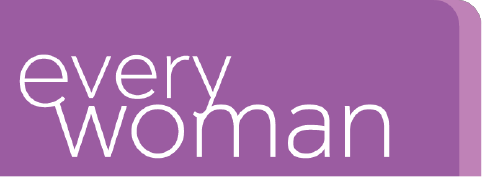Are you yearning for the next challenge but unsure what that might be? You’re not alone. Over half (52%) of attendees on our webinar Uncover your working identity described themselves as “dissatisfied with the professional status quo”.
If you’ve been languishing in this territory too long, it’s easy to start feeling stuck, demotivated and under pressure to answer those big career questions: What do I want to do? Who do I want to be? Pippa Isbell’s quick exercises will move you towards an answer.
EXERCISE 1: WHO AM I RIGHT NOW?
To understand who you want to become, it’s necessary to take a black and white view of who you are right now. Take a bunch of post-it notes and on each one, write a role you play in your current life.
Think granular: beyond your job title and core duties, what are the various duties you perform on a day to day basis – supporter to a colleague who’s struggling, go-to person on a particular area of business data, mentor to a new graduate, unofficial PA to your line manager? Create an exhaustive list.
Go beyond the workplace too. “You can’t do this exercise without taking a holistic approach,” cautions everywomanNetwork expert Pippa Isbell. “You need to look at who you are at home, at work, and in any other circumstances in your life.”
Once all your post-in notes are up on a wall in front of you, take stock. What is this picture telling you about who you are right now? If you could wave a magic wand, which items wouldn’t be up there, which would be different, and which are missing altogether? Now think practicalities: in the absence of a magic wand, what strategies or resources can you put in place to get the picture closer to one you’d be happier with?
EXERCISE 2: AWAKEN YOUR HIDDEN TALENTS
TIP
Sometimes it takes someone else to point out your true gifts.
Create a SWOT analysis, calling on the help of a mentor.
You might be surprised at how others perceive your strengths.
“Talent can’t be taught. But it can be awakened.” These words from novelist Wallace Stegner highlight an important point about talent – that sometimes your core skills aren’t always immediately apparent, neither to others nor yourself.
Often your talents remain hidden because they haven’t been developed. Or you might feel it too grand to describe a particular skill as a ‘talent’. After all, you perform it so effortlessly, or take such pleasure in doing so, it probably doesn’t even count, does it? Well the answer is that yes, it absolutely does.
Spend some time thinking about the things you do in the course of your job that come very easily to you (while others may struggle) or that bring you the most joy (while others dread or avoid them). Which tasks fire you up or leave you with a deep sense of satisfaction on completion?
What clues does this exercise give you about your natural talents? It’s a safe bet that by crafting your role so that you are able to utilise more of your natural talents, not only will your perceptions shift, but new possibilities will open up before you.
EXERCISE 3: SHINE UP YOUR ROSE TINTED GLASSES
TIP
Ask yourself:
1. When have I been most committed, passionate, enthusiastic?
2. When have I been most sure of myself and my decisions?
3. When have I most enjoyed my work?
We’ve all been in a position where – during a particularly stressful or dull period – we look back in fondness at earlier times when we were in that much better role, managed by that much better boss, surrounded by much friendlier colleagues.
It’s very easy – and not always helpful – to revel in glories past, but this exercise asks you to take an honest assessment of what it was about periods gone that make them career highlights.
Once you have outlined the particular moments, work through each carefully, asking yourself what was it that made it so enjoyable. Who were you working with? What was your day-to-day like? What new skills did you acquire? What talents were you deploying? What relationships were you forming?
The aim of the exercise is not to work out how you can move backwards, but to understand what your core values are with regards to enjoying your job, so that you can work out how to incorporate or negotiate these elements into your present life.
EXERCISE 4: A BITE OF THE ELEPHANT
One of the reasons people can become stuck in a rut, is they’ve come to think that absolutely everything must change in order for success or happiness to follow. It might be that fairly major changes must occur, but as the old saying goes, “When eating elephants, one bite at a time.”
The previous exercises will have given you some indication of what it is you want. Now it’s up to you to create a path to take you there.
Start small: If you’ve established that you want more flexibility in your life, ask yourself how you might bring about one day a week of home working.
If you’re working remotely and feel isolated, brainstorm creative ways you can feel more connected to co-workers.
If you’ve been promoted into a role that takes you further away from what you truly love to do, perhaps you can become a mentor to others now acquiring those skills.
“There may be someone out there who’s doing what you want to be doing, living their lives or pursuing a path that appeals to you. Get to know them. Go ask them about it.” Pippa Isbell
EXERCISE 5: GET TO KNOW YOUR MANY TRUE SELVES
“Stop trying to find your one true self. Focus your attention on which one of your many possible selves you want to test and learn more about.”
Herminia Ibarra
Economist and Professor at INSEAD
It’s natural to feel torn in more than one, or indeed many, directions when trying to decide on your ultimate career purpose. In reality, most people have various skillsets and interests that could be applicable to many different areas. So why choose one? The notion of a career “ladder” is becoming dated, replaced by the idea of a “jungle gym”, allowing you to develop portfolio careers and develop in multiple ways.
So, instead of using your time and headspace trying to settle on one happily ever after career, brainstorm all the many different paths and options open to you, and commit to exploring those that most appeal to you right now. Reach out to people in those roles and ask them what the reality is.
Read books, watch videos and visit industry websites to explore what’s happening in the workplaces you’re interested in. Investigate stretch assignments or even sabbaticals that could test your ability to go the distance in a new arena. You never know, you might just end up on an entirely new and unexpected path altogether.
EXERCISE 6: CRUSH YOUR INNER DEMON
“However successful we are, there’s a little bit of us that has that inner saboteur saying ‘Huh, what makes you think you can achieve that then?’”
Pippa Isbell
“Of all the forces that hold women back, none are as powerful as entrenched beliefs,” says Joanna Barsh of McKinsey & Company.
“I can’t do that.” “Nobody will let me do that.” “I’m not good enough for that.” If you regularly find yourself giving yourself this kind of self-talk, perhaps the real thing that’s holding you back and keeping you stuck is yourself.
If this resonates, you’re not in a minority: 70% of everywomanNetwork members say that what’s holding them back is the courage to make necessary changes.
Grappling with your inner demon can be tough. Start by writing down all the limiting beliefs it gives you. This might sound counterintuitive to moving beyond these negative thoughts, but by recognising these messages you can begin to dissociate them from reality and attribute them to an evil little gremlin whose sole purpose is to stop you succeeding.
The next step is to fight back. Next to each of those beliefs, write “because” and ask yourself if there are any facts to back up the statement. It might be useful to work through this exercise with a mentor – someone who knows you, your skillset and capabilities well and can steer you back to truth if your inner demon dials up its volume.
Discover more ways to flourish in your career in our companion webinar series, featuring episodes Uncover your working identity and How to tell your professional story.





